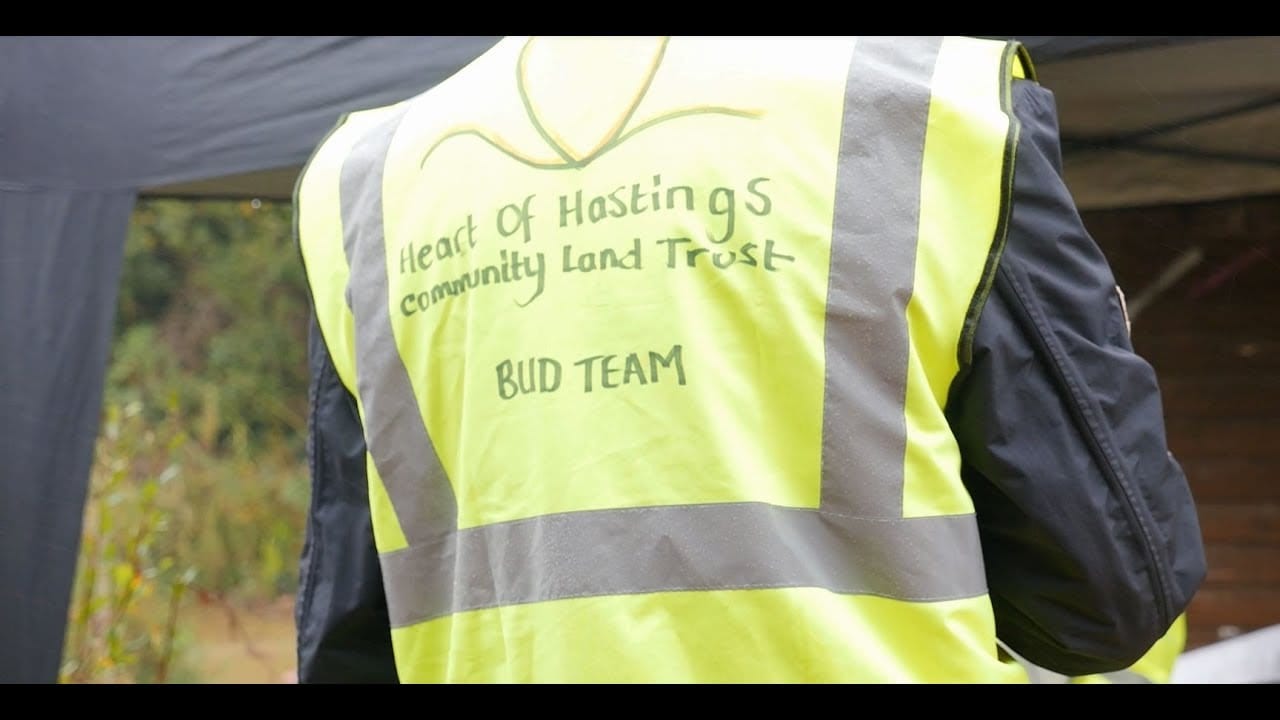
With thanks to Shelley Feldman at Heart of Hastings CLT for writing this article.
The bookshelf in our office has copies of The Ragged Trousered Philanthropists by Robert Tressell and a copy of Estates by Lynsey Hanley.
Although written almost a century apart, the themes of both these books are relevant to the issues of regeneration that our CLT wants to tackle: poor housing, lack of opportunity, money and power concentrated outside of the community.
In RTP (which was written and based in Hastings) workers struggle to live in crowded slum dwellings, paying unmanageably high rents to private landlords. In Estates Hanley explores how the housing estates of the 1950s to 70s not only failed to solve the problems of poor housing, but, in fact, created new ones; with bad design and poor infrastructure creating disenfranchised “communities” lacking opportunity and hope.
Both books highlight how top-down decisions, whether exploitative or well-intentioned, leave people with no stake in the assets around them.
Connecting people with spaces is a fundamental value of Heart of Hastings CLT. Our vision is affordable spaces held in community ownership. How people live and work in these places must involve them. Meeting social and care needs, environmental challenges, overcoming exclusion can only happen through the agency of people. This is what we mean when we speak about the power of bottom up development.
Community organising, agency and vibrant values
A belief in bottom up development is the reason why Sam, our Community Organiser was our first member of staff and is the cornerstone of our organisation. Sam’s job is to help the community organise itself.
This means creating space to explore ideas – Sam knocks on doors, listens, organises community planning events, capacity building from the bottom up.
Two strands have emerged from Sam’s work:
The BUD team:
BUD are a self-defined group of “more than individuals” with a sense of identity, purpose and ownership of Heart of Hastings. They use the acronym BUD in the sense of a plant emerging and developing, and BUD is a space for development.
BUD are not volunteers in any traditional sense: They run projects and events and speak out for community development. Throughout this is seen as an exchange among equals, it is not a philanthropist/ beneficiary relationship.
Bottom Up Values:
Heart of Hastings is part and of the community, with bottom up development at its core, but we are a community benefit society with a governance structure not suited to anarchic decision making. It takes effort to live the values and BUD members are there to remind us of our aims and values. Decisions ratified in the board room will almost certainly have been chewed over in the social spaces between meetings first, but we still have a BUD rep at board meetings, and a BUD member on our board of trustees. This does not preclude differences between viewpoints and the need to understand different perspectives. It makes for a healthy tension that keeps the commitment to bottom up development vibrant.
The Organisation Workshop
Sam’s work doesn’t end with the BUD team. We care about affordable spaces, but, great spaces, in themselves, as Hanley demonstrates, do not fix anything. BUD values are great, but how to engage the excluded?
With the rebirth of the derelict Observer Building, we found an opportunity to run an Organisation Workshop. OW is a simple idea: excluded individuals can be the agent of their own development if they have tools, finance and opportunity – just what was lacking in RTP and Estates.
OW is a radical, grassroots, DIY approach to community development:
In an OW, people are participants, not beneficiaries. In the ‘Organisation Workshop in the Observer Building’ (OWintheOB), participants out of work or with other barriers to inclusion committed to a month long, full-time project to build their own opportunities. Some participants were BUD members, but many were new to Heart of Hastings and to each other. The experience had its chaos, mess and risks, but allowing the space for chaos meant that the participants had to learn to organise themselves, and they did. The participants built workspaces, wrote a newspaper and catered for themselves, providing 2 meals a day for the whole enterprise.
Heart of Hastings provided the opportunity, the community took it. After a month the OW proper ended, but there is an emergent group, the OW Pioneers who are continuing to work and grow together. In OW language, they are an “enterprise”, who the Heart of Hastings “enterprise” will work with and support.
On its own, Heart of Hastings can’t solve the problems outlined in Estates or Ragged Trousered Philanthropists. Top down decisions are still going to be taken. Bottom up development is not easy. Together we can point to the agency that has been achieved through the BUD team and the Organisation Workshop. We are stronger because we work with people who feel confident to question, challenge, support and inspire us.
Read about the OWintheOB in the participants own words in Hastings Independent Press, the Independent or visit heartofhastings.org.uk/ow for more information.
Could your CLT benefit from community organising training?
Apply for our new Cohesive Communities Fund (deadline: Wednesday 14 August 2019) to get trained in this area and other movement building tactics. For more information on the fund, contact us.
